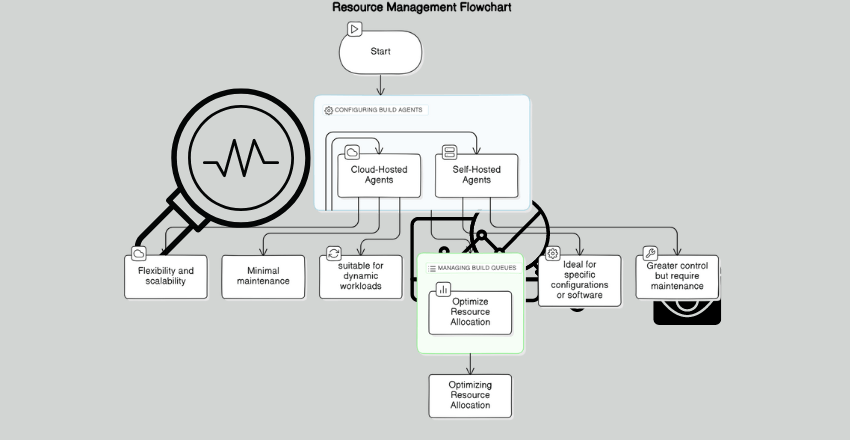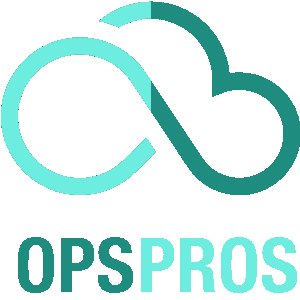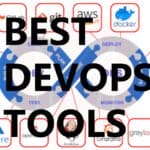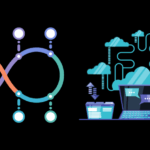Stepping into the role of a Build Administrator in Azure DevOps is not for the faint-hearted. The challenge lies in the intricate dance of managing resources, code, and teams – tasks often underestimated in their complexity. From my years of experience in the field, I can share some tested strategies and insights that can help you navigate this role with ease and effectiveness.
The role of a Build Administrator is often seen as highly technical and detailed, but it’s much more than that. It’s about ensuring seamless integration and delivery of software, which is crucial for the success of any SaaS company. Imagine your build process as the backbone of your development lifecycle. If the backbone is weak, the entire body suffers.
From the UK to the USA, I’ve worked with numerous SaaS companies where the efficiency of the build process directly impacted product release cycles, customer satisfaction, and ultimately, revenue. Over the years, I’ve developed a holistic understanding of the nuances involved in managing build processes, from optimizing pipelines to ensuring compliance with industry standards.
Key Roles and Responsibilities

Managing Build Pipelines
One of the primary responsibilities of a Build Administrator is to manage build pipelines. This involves creating, maintaining, and optimizing continuous integration and continuous delivery (CI/CD) pipelines. These pipelines ensure that code changes are automatically built, tested, and deployed.
Managing build pipelines requires a comprehensive understanding of both the technical and operational aspects of CI/CD. A well-constructed pipeline not only automates the build process but also enhances the reliability and speed of software delivery. Let’s delve deeper into how this can be achieved:
Pipeline Creation and Maintenance:
When setting up pipelines, it’s crucial to start with a clear understanding of the project requirements and the development workflow. Each project might need a different configuration depending on factors like the programming languages used, the deployment environments, and the testing frameworks in place.
trigger:
- main
pool:
vmImage: 'ubuntu-latest'
steps:
- script: echo Hello, world!
displayName: 'Run a one-line script'In this example, a simple pipeline is set up to trigger on changes to the main branch, run on an Ubuntu virtual machine, and execute a basic script. This is a fundamental setup, but pipelines can get much more complex involving multiple stages like building, testing, and deploying.
Optimizing CI/CD Pipelines:
Optimization often involves parallelizing tasks to reduce build times. For example, running unit tests concurrently rather than sequentially can significantly speed up the build process. Additionally, using cache mechanisms for dependencies can avoid redundant tasks, further reducing build times.
jobs:
- job: Build
pool:
vmImage: 'ubuntu-latest'
steps:
- task: UseNode@1
inputs:
version: '10.x'
- script: npm install
displayName: 'npm install'
- script: npm test
displayName: 'Run tests'Resource Management

Efficiently managing resources is crucial. This includes configuring build agents, managing build queues, and optimizing resource allocation to ensure that builds run smoothly and efficiently.
Configuring Build Agents:
Build agents are the backbone of your build pipeline execution. Choosing the right type and number of agents can make a significant difference in performance. Agents can be self-hosted or cloud-hosted, and selecting the right type depends on your workload requirements and cost considerations.
Self-Hosted Agents:
Ideal for tasks requiring specific configurations or software. They offer greater control but require maintenance.
Cloud-Hosted Agents:
Provide flexibility and scalability with minimal maintenance, making them suitable for dynamic workloads.
Managing Build Queues:
Efficient queue management ensures that build tasks are processed in a timely manner. This involves prioritizing critical builds, managing concurrent build limits, and ensuring that high-priority tasks are not delayed by less critical ones.
pool:
name: 'Default'
demands:
- agent.name -equals Agent1In this example, the build is configured to run on a specific agent named Agent1, ensuring that particular resources are allocated to high-priority tasks.
Security and Compliance
Ensuring security and compliance is another critical aspect. This involves setting up proper access controls, managing secrets securely, and ensuring that the build processes comply with organizational and regulatory standards.
Access Controls:
Implementing role-based access control (RBAC) ensures that only authorized personnel can make changes to the build pipelines. This minimizes the risk of unauthorized modifications that could compromise the build process.
security:
roles:
- name: Build Administrator
permissions:
- pipelines: manage
- repositories: manageSecret Management:
Managing secrets securely is paramount. Integrating Azure Key Vault with your pipelines helps manage sensitive information like API keys and passwords securely.
steps:
- task: AzureKeyVault@1
inputs:
azureSubscription: '<Azure Service Connection>'
KeyVaultName: '<KeyVaultName>'
SecretsFilter: '*'This task pulls secrets from Azure Key Vault, ensuring that sensitive data is not exposed in the pipeline scripts.
Compliance:
Adhering to compliance standards such as GDPR, HIPAA, or industry-specific regulations is essential. This might involve maintaining audit logs, implementing data protection measures, and ensuring that all processes comply with relevant legal requirements.
Collaboration and Communication

A Build Administrator must foster collaboration and communication across teams. This involves working closely with developers, testers, and operations teams to ensure that the build process meets everyone’s needs and that any issues are promptly addressed.
Regular Meetings:
Conduct regular meetings with cross-functional teams to discuss the build process, address any issues, and plan improvements. These meetings can be daily stand-ups, weekly sync-ups, or monthly reviews depending on the project needs.
Clear Documentation:
Maintain clear and comprehensive documentation for all build processes and configurations. This ensures that everyone on the team understands how the build system works and can troubleshoot issues independently.
Automated Notifications:
Set up automated notifications to alert relevant team members about build status changes, failures, or other critical events.
steps:
- task: SlackNotification@0
inputs:
connectionString: '<Slack Webhook URL>'
message: 'Build $(Build.BuildNumber) failed. Check the logs for details.'This example integrates Slack notifications into the pipeline, ensuring that team members are promptly informed of any issues.
Essential Skills
Technical Proficiency
Strong technical skills are a must. This includes a deep understanding of Azure DevOps, scripting languages (like PowerShell or Bash), and a good grasp of various build tools and technologies.
Azure DevOps Expertise:
Mastery of Azure DevOps includes understanding its various services like Azure Repos, Pipelines, Boards, Artifacts, and Test Plans. Knowing how to integrate these services effectively can streamline the build and deployment process.
Scripting Languages:
Proficiency in scripting languages like PowerShell, Bash, or Python is essential. These scripts automate various tasks within the build pipeline, from setting up environments to deploying applications.
Powershell
# PowerShell script to deploy a web app
az webapp up --name MyWebApp --resource-group MyResourceGroup --plan MyPlanBash
# Bash script to deploy a web app
az webapp up --name MyWebApp --resource-group MyResourceGroup --plan MyPlanBuild Tools:
Familiarity with build tools like Maven, Gradle, or NPM is necessary depending on the programming languages and frameworks used in your projects.
Problem-Solving Skills

Effective problem-solving skills are essential. A Build Administrator must quickly diagnose and resolve build failures, often under tight deadlines.
Root Cause Analysis:
When a build fails, quickly identifying the root cause is critical. This might involve analyzing build logs, checking code changes, or reviewing recent configuration updates.
Proactive Troubleshooting:
Proactively setting up alerts and monitoring systems can help catch potential issues before they become critical. Tools like Application Insights or custom scripts can monitor build health and alert administrators to anomalies.
Attention to Detail
Attention to detail is critical. Small misconfigurations can lead to significant issues in the build process. A keen eye for detail helps prevent such problems.
Configuration Reviews:
Regularly review build configurations to ensure they are correct and up-to-date. This includes checking environment variables, build triggers, and deployment settings.
Automated Checks:
Implement automated checks and validations within the pipeline to catch common errors. This might involve running linting tools, static code analysis, or dependency checks.
steps:
- task: SonarCloudPrepare@1
inputs:
SonarCloud: 'SonarCloudConnection'
organization: 'my-org'
scannerMode: 'CLI'
configMode: 'manual'This example integrates SonarCloud for static code analysis, helping catch issues early in the development process.
Daily Tasks
Monitoring and Maintenance
Daily monitoring of build pipelines is essential to catch issues early. This involves checking logs, managing build queues, and ensuring that build agents are running optimally.
Log Analysis:
Regularly analyze build logs to identify patterns or recurring issues. This helps in diagnosing problems and improving the build process over time.
Queue Management:
Monitor the build queue to ensure that tasks are processed efficiently. Adjust priorities or add additional build agents if necessary to prevent bottlenecks.
Continuous Improvement
A good Build Administrator continuously seeks to improve the build process. This involves identifying bottlenecks, implementing new tools or practices, and staying updated with the latest trends in CI/CD.
Continuous Improvement
Performance Metrics:
Track key performance metrics like build times, failure rates, and deployment success rates. Use these metrics to identify areas for improvement and measure the impact of changes.
Adopting New Tools:
Stay informed about the latest tools and practices in the CI/CD space. Experiment with new tools that could enhance your build process, such as new testing frameworks, deployment tools, or build optimizations.
Documentation and Training
Maintaining up-to-date documentation and providing training to team members ensures that everyone understands the build process and can follow best practices.
Creating Documentation:
Develop clear and detailed documentation for all aspects of the build process, including pipeline configurations, troubleshooting steps, and best practices.
Training Sessions:
Conduct regular training sessions for team members to ensure they understand the build process and can effectively contribute to its improvement. This could be in the form of workshops, webinars, or one-on-one training.
Examples
Automating Routine Tasks
Automation is key to efficiency. Automate routine tasks wherever possible. For example, setting up automated notifications for build failures can save time and ensure quick resolution.
Automated Notifications:
Setting up automated notifications can significantly reduce the time to respond to build failures. Integrate your pipeline with communication tools like Slack, Microsoft Teams, or email.
steps:
- task: SlackNotification@0
inputs:
connectionString: '<Slack Webhook URL>'
message: 'Build $(Build.BuildNumber) failed. Check the logs for details.'Task Automation:
Automate repetitive tasks like dependency installation, code formatting, or environment setup using scripts or dedicated tools.
steps:
- script: npm ci
displayName: 'Install dependencies'
- script: npm run lint
displayName: 'Lint code'Leveraging Metrics and Analytics
Use metrics and analytics to drive improvements. Track build times, failure rates, and other key metrics to identify areas for optimization.
Monitoring Tools:
Utilize monitoring tools like Azure Monitor, Application Insights, or third-party services to track the performance of your build pipelines. Set up dashboards to visualize key metrics.
steps:
- task: AzureMonitor@1
inputs:
azureSubscription: '<Azure Service Connection>'
workspaceId: '<Workspace ID>'
query: 'PerformanceMetrics'Analyzing Data:
Regularly analyze the collected data to identify trends and patterns. Use these insights to make informed decisions about where to focus optimization efforts.
Reducing Build Times
In one of my previous roles, we managed to reduce build times by 50% by optimizing our build pipelines and resource allocation. This involved parallelizing tasks, upgrading build agents, and refining our CI/CD processes.
Identifying Bottlenecks:
We started by analyzing our build pipeline to identify bottlenecks. We found that certain tasks, such as running tests and building artifacts, were taking significantly longer than expected.
Parallelizing Tasks:
To address this, we parallelized as many tasks as possible. For example, we split our test suite into smaller chunks that could run concurrently.
jobs:
- job: Build
pool:
vmImage: 'ubuntu-latest'
steps:
- script: echo Build started
displayName: 'Build stage'
- job: Test
pool:
vmImage: 'ubuntu-latest'
dependsOn: Build
steps:
- script: echo Test started
displayName: 'Test stage'Upgrading Build Agents:
We upgraded our build agents to more powerful machines, reducing the time taken for resource-intensive tasks.
Refining CI/CD Processes:
Finally, we refined our CI/CD processes by removing unnecessary steps, optimizing scripts, and ensuring that all dependencies were cached effectively.
Wrapping up
Becoming a Build Administrator in Azure DevOps is a challenging but rewarding role. It requires a blend of technical proficiency, problem-solving skills, and meticulous attention to detail. Understanding the key roles and responsibilities, and leveraging the insights and strategies shared here, you can navigate this role with confidence and effectiveness.
If you have any questions or need further guidance, feel free to reach out.

James is an esteemed technical author specializing in Operations, DevOps, and computer security. With a master’s degree in Computer Science from CalTech, he possesses a solid educational foundation that fuels his extensive knowledge and expertise. Residing in Austin, Texas, James thrives in the vibrant tech community, utilizing his cozy home office to craft informative and insightful content. His passion for travel takes him to Mexico, a favorite destination where he finds inspiration amidst captivating beauty and rich culture. Accompanying James on his adventures is his faithful companion, Guber, who brings joy and a welcome break from the writing process on long walks.
With a keen eye for detail and a commitment to staying at the forefront of industry trends, James continually expands his knowledge in Operations, DevOps, and security. Through his comprehensive technical publications, he empowers professionals with practical guidance and strategies, equipping them to navigate the complex world of software development and security. James’s academic background, passion for travel, and loyal companionship make him a trusted authority, inspiring confidence in the ever-evolving realm of technology.







